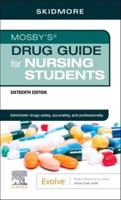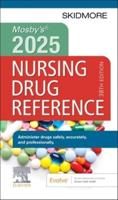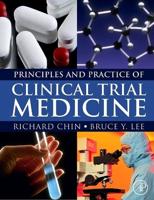Publisher's Synopsis
Identify risk factors and potential emergencies before they occur with Preventing Medical Emergencies, the only book on the market to provide dental professionals, hygienists, and assistants with step-by-step procedures for preventing medical emergencies and effectively managing them when they occur. Organized to follow the most recent American Dental Association Health History form, the book includes easy-to-find follow-up questions for all conditions, along with clinically relevant treatment plan modifications and strategies for preventing and managing specific emergencies. You'll find easy-to-follow coverage of general pathophysiology, medical management of patients with compromised health, screening techniques for identifying patients at risk for complications, as well as ways to manage in-office emergencies, such as adverse drug interactions. Case studies throughout the book explore a wide range of medical conditions and bring concepts to life, while a wide range of self-test, review, and case study questions help you master key concepts and procedures. Real world case studies with accompanying questions demonstrate risk factors and their management for a wide range of medical conditions, such as diabetes, pregnancy, coronary artery disease, and more Unique, easy to find follow-up questions for all conditions on the most recent ADA Health History form help you obtain more detailed patient histories, identify potential risks, and make appropriate treatment plan modifications. Step-by-step procedures for preventing medical emergencies, as well as for effectively managing those emergencies that do occur, prepare you for safe patient practice. Up-to-date coverage of managing care for patients with special needs, such as cystic fibrosis, intellectual disabilities, and traumatic brain injury, prepares you for specific challenges in preventing medical emergencies. Built-in learning aids, including key terms with definitions and self-study, review, and case study questions, help you master key concepts and procedures. Videos illustrating procedures for the most common medical emergencies in dental practice. Videos depicting management procedures for the most common medical emergencies in dental practice. Updated professional guidelines - including antibiotic prophylaxis for clients with joint replacements, American Heart Association guidelines on hypertension, and clinical guidelines on prevention of mucositis in cancer therapy - keep students current with the latest best practices in the field. Updated ADA/FDA radiographic guidelines on selecting patients to receive dental radiographs and using patient assessments when making the decision enhance student decision making and critical thinking skills. Updated coverage of pediatric blood pressure values provides guidance on when to refer for medical evaluation. The most current ADA Health History form used throughout the book reflects current best practices. New content on managing care for patients with special needs, including web resources for care of special needs patients, prepares students for specific risk assessment and management challenges. New box on clinical management for patients with special needs, such as cystic fibrosis, intellectual disabilities, and traumatic brain injury, prepares readers for effective practice. New boxes on condition-specific follow-up questions provide readers with additional tools they can use to obtain a more thorough patient history. A new full color presentation of dental conditions and a new pedagogically effective design improve student understanding and make key information easier to locate. Reformatted end-of-chapter material (with answers to end-of-chapter questions moved to the back of the book) facilitates self-testing and review. New chapter-by-chapter PowerPoint Presentations save instructors time and make the book easier to teach from. The only text to focus on prevention of medical emergencies, the book shows readers how to use medical history review to identify clinical conditions and potential risks in patients with compromised health. Real world case studies with accompanying questions bring concepts to life and demonstrate preventable emergencies in patients with a wide range of medical conditions, including diabetes, pregnancy, coronary artery disease, and more. Unique, easy to find follow-up questions for all conditions on the most recent ADA Health History form help students obtain more detailed patient histories, identify potential risks, and make appropriate treatment plan modifications. Explanations of the questions are included on a comprehensive health history. Step-by-step procedures for preventing medical emergencies, as well as for effectively managing those emergencies that do occur, prepare readers for safe patient practice. Key information in every section, including the pathogenesis of the specific condition, the relevance of the disease condition to dental treatment, and management of specific emergencies, provides the foundational understanding readers need for effective assessment and management. Designed for flexible use in the classroom or as self-study, the book is organized to fits into a 15-week semester and includes a wide range of features, questions, and case studies that guide self-study. Built-in learning aids, including key terms with definitions and self-study, review, and case study questions, help readers master key concepts and procedures. © 2015 | 240 pages







